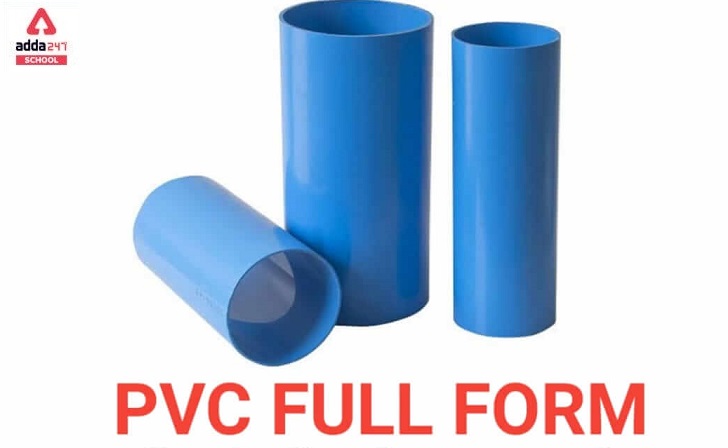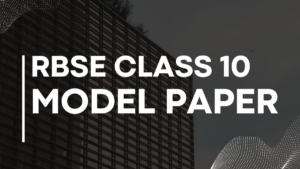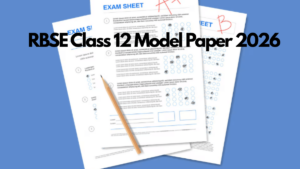PVC Full Form in English
PVC Full Form: The full form of the abbreviation, PVC, stands for Poly Vinyl Chloride. Vinyl chloride polymerization produces PVC. PVC is found in a wide range of products, including raincoats, wires, pipelines, bottles, credit cards, flooring, and so on. It may be used to make a variety of products since it is resistant to water and fire. PVC is a thermoplastic polymer and melts when heated and solidifies when cooled.
Polyvinyl chloride is the third most extensively used synthetic plastic polymer on the planet. Each year, around 40 million tonnes of PVC are produced.
Read About: ED Full Form
PVC Full Form in Hindi
पीवीसी का पूर्ण रूप पॉली विनाइल क्लोराइड के लिए है। विनाइल क्लोराइड पोलीमराइजेशन पीवीसी का उत्पादन करता है, जो एक पॉलीमर है। पीवीसी उत्पादों की एक विस्तृत श्रृंखला में पाया जाता है, जिसमें रेनकोट, तार, पाइपलाइन, बोतलें, क्रेडिट कार्ड, फर्श आदि शामिल हैं। इसका उपयोग विभिन्न प्रकार के उत्पाद बनाने के लिए किया जा सकता है क्योंकि यह पानी और आग के लिए प्रतिरोधी है। पीवीसी रासायनिक सूत्र के साथ एक थर्मोप्लास्टिक बहुलक है – [सीएच 2 = सीएच सीएल] एन- जो गर्म होने पर पिघलता है और ठंडा होने पर जम जाता है।
पॉलीविनाइल क्लोराइड ग्रह पर तीसरा सबसे व्यापक रूप से इस्तेमाल किया जाने वाला सिंथेटिक प्लास्टिक बहुलक है। हर साल करीब 40 मिलियन टन पीवीसी का उत्पादन होता है।
Read About: RO Full Form
PVC Full Form and PVC Pipe Manufacturing
Polymerization of vinyl monomer (VCM) is used to make polyvinyl chloride, and VCM is made by chlorinating ethylene. In a cracking apparatus, the resultant ethylene dichloride (EDC) is pyrolyzed.
Addition polymerization produces polyvinyl chloride from a variety of vinyl chloride monomers. PVC is synthesised using a well-known polymerization technique.
Emulsions Polymerization
Surfactants are used to scatter the vinyl chloride monomer in water in this technique. The key particles are robust, smooth-surfaced circles that are gathered into unpredictably moulded totals with a typical mean molecular size of 40-50 m and a range of 0.1-100 m. E-PVC gums are used in a variety of well-known applications, including covering, plunging, and spreading.
Suspension Polymerization
A polymerization initiator and several additional chemicals are delivered to the monomer in a pressure-tight reactor. The average molecular size of suspension polymerized PVC is 100-150 m, with a range of 50-250 m. S-PVC grades are designed to suit a wide range of requirements, such as high plasticizer intake for adaptable goods or a large mass thickness and powder stream for rigid expulsion.
Read About: SDM Full Form
PVC Full Form and most Important Characteristics
- Abrasion-resistant
- Strong, but lightweight.
- There is high chlorine content in PVC
- Climate, chemicals, corrosion, abrasion, and shock-resistant
- High dielectric strength, thus an ideal material for insulation
- Inorganic compounds resistant
Read About: UPS Full Form
CPVC Full Form
Flexible and rigid polyvinyl chloride are the two major types available. However, there are other types such as CPVC, PVC-O, and PVC-M.
The addition of excellent plasticizers to PVC reduces the crystallinity of the material, making it more flexible. These plasticizers showcase ointments by resulting in a much clearer and more adaptable plastic. PVC-P is the name given to this type of PVC on occasion.
Unplasticized or rigid PVC is a toughened and cost-effective plastic that offers excellent resistance to motion, water, climate, synthetic concoctions, and other damaging factors. This type of PVC is also known as UPVC, PVC-U, or uPVC.
Chlorination of PVC pitch produces chlorinated Polyvinyl Chloride. Solidity, concoction strength, and fire retardancy are all enhanced by a high chlorine concentration. CPVC can sustain a wider range of temperatures than PVC.
The formless structure of PVC-U is transformed into an organised layer to create Molecular Oriented PVC. PVC with a bi-pivot has better physical properties (solidness, weariness obstruction, lightweight and so on.).
Modified PVC is a mixture of PVC that has been altering operators added to it, resulting in increased strength and effect qualities.
Read About: RMP Full Form
PVC Full form: Chlorination Process
Chlorination, which raises the chlorine content of PVC to or above 67 per cent, is a valuable modification. Chlorination of an aqueous solution of suspended PVC particles, followed by exposure to UV radiation, begins free-radical chlorination, produces chlorinated polyvinyl chloride (CPVC). The reaction yields CPVC, which can withstand higher temperatures and harsh conditions than PVC.
| CBSE Full Form | ICSE Full Form |
| CEO Full Form | SOP Full Form |
| AM PM Full Form | ACP Full Form |
PVC Full Form: FAQs
Ques. What is the purpose of PVC?
Ans. PVC is a versatile material with several uses, including window frames, drainage pipes, water service pipes, medical devices, blood storage bags, cable and wire insulation, and so on.
Ques. What are the drawbacks of PVC?
Ans. PVC contains potentially harmful chemical additions such as phthalates, lead, cadmium, and/or organotins, which can harm your child’s health.
Ques. Is PVC is Water-resistant?
Ans. The PVC coating makes the material waterproof depending on its formula.
Ques. Is PVC a carcinogen?
Ans. Inhaling PVC dust increases a person’s risk of cancer and liver damage.
Ques. Is the use of PVC is probated in Europe?
Ans. In the EU, PVC films and packaging meant for contact with food are not prohibited.









 RBSE Class 10 Model Paper 2026 Out, Down...
RBSE Class 10 Model Paper 2026 Out, Down...
 RBSE Class 12 Model Paper 2026 for Arts,...
RBSE Class 12 Model Paper 2026 for Arts,...
 SLAT Preparation 2026: Tips and Subject ...
SLAT Preparation 2026: Tips and Subject ...














